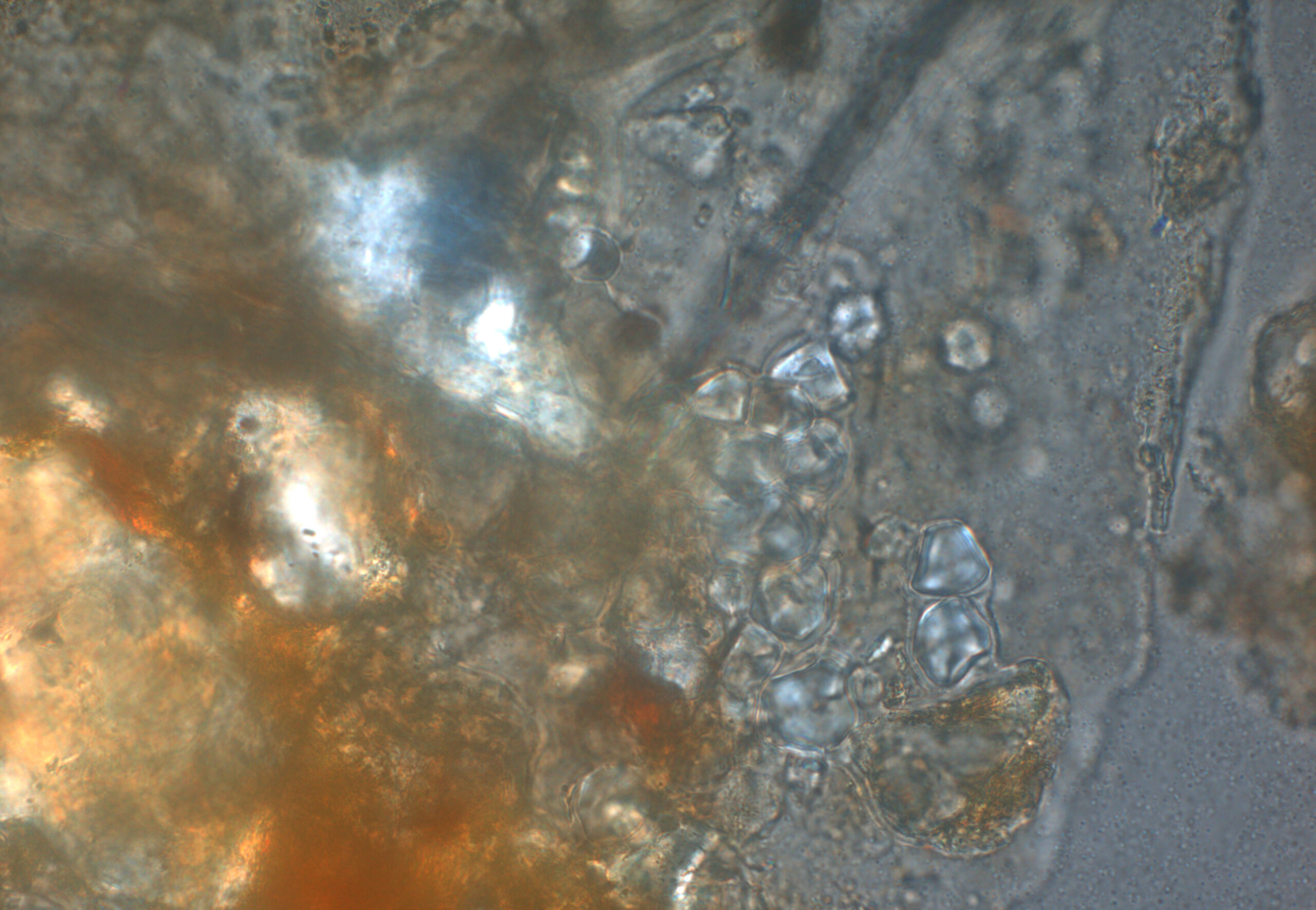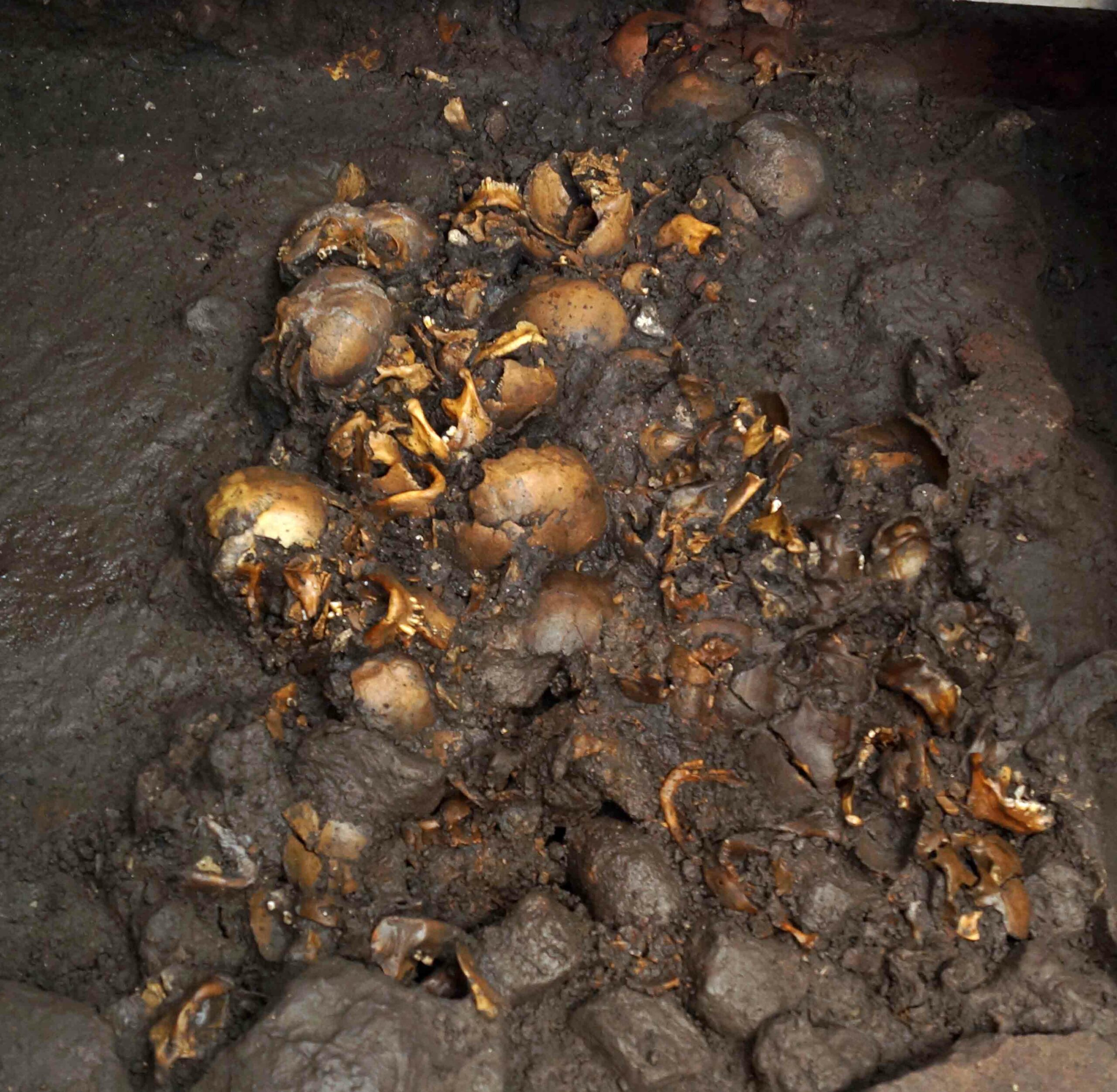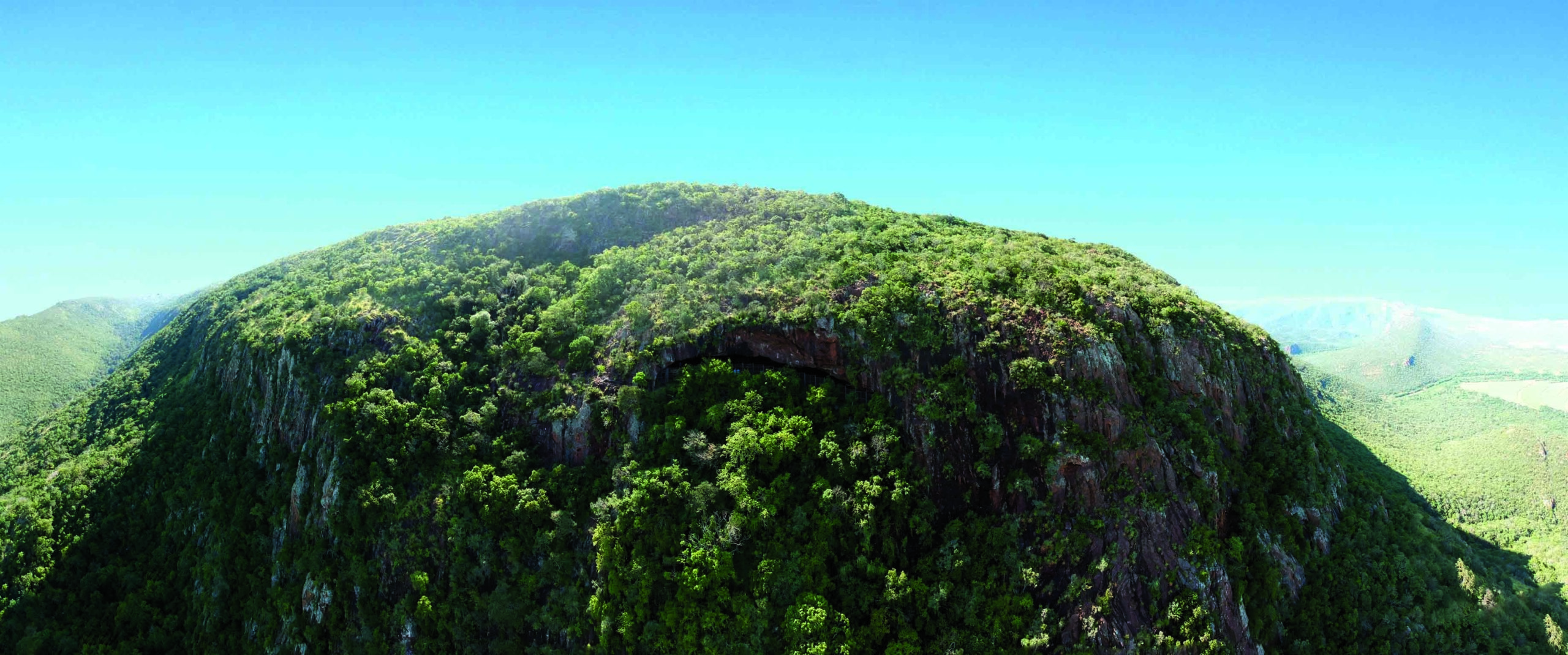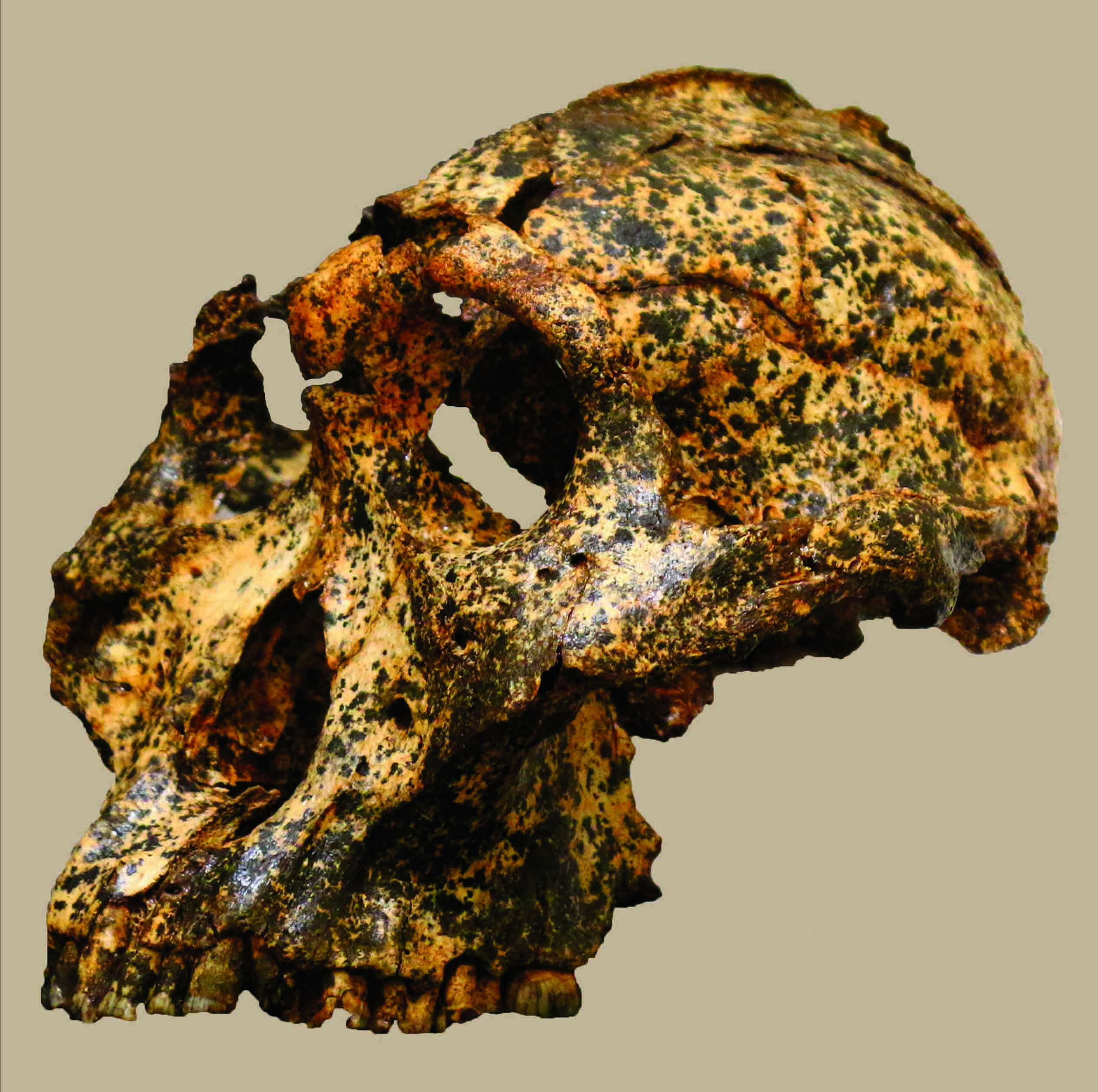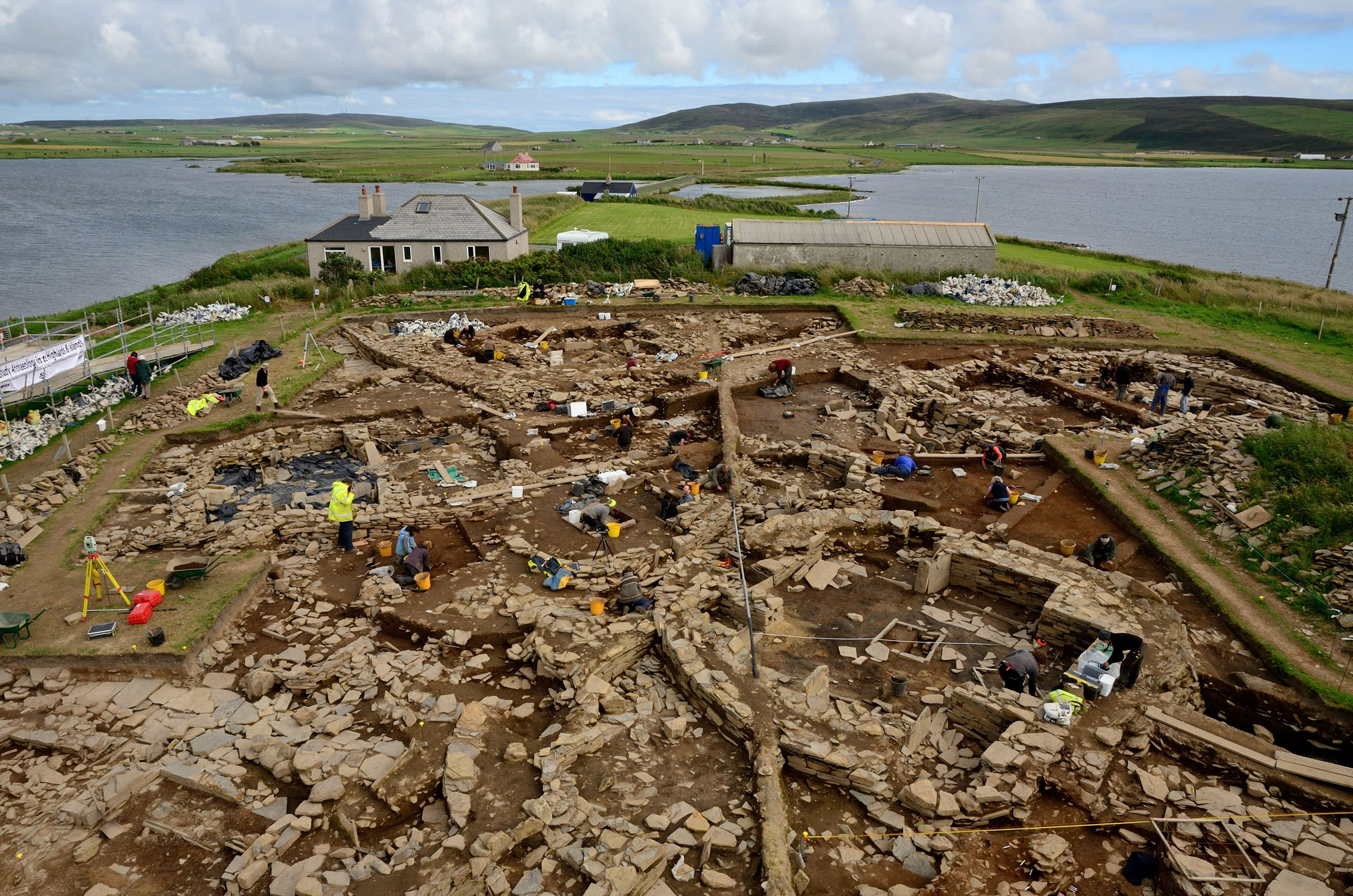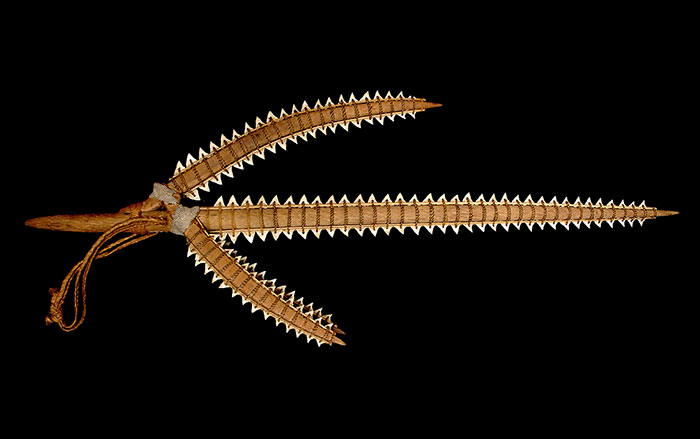
A notched wooden stick from South Africa’s Border Cave dating to 24,000 years ago contains the earliest evidence of humans using poison. The artifact was found in the 1970s, but new chemical analyses conducted by a research team led by Francesco d’Errico of Bordeaux University in France revealed trace amounts of substances from poisonous castor beans. The stick may have been used to apply poison to arrowheads just as a culture of modern-day hunter-gatherers called the San does today in southern Africa. According to d’Errico, poison is an important part of traditional San hunting methods because their bone-tipped arrows usually don’t cause enough damage to kill large prey on their own.
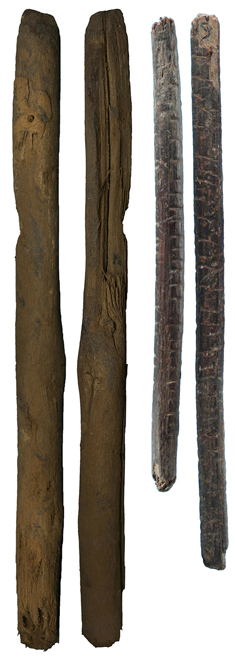
In South Africa’s Border Cave, archaeologists found ostrich eggshell beads (top), wooden digging sticks (left), and notched sticks (right) used to apply poison to arrowheads.The poison applicator is just one of several artifacts, some dating to as early as 44,000 years ago, that resemble objects used by the San. Others include a digging stick, ostrich eggshell beads, carved pig tusks, bone arrowheads, and a lump of beeswax. D’Errico’s team believes the artifacts indicate that San culture emerged about 44,000 years ago, making these artifacts the earliest link to a culture of modern humans.
The findings also clarify why it is thought that modern human behavior—loosely defined as making objects that show symbolic thinking or complex hunting methods—may have begun in Africa. Earlier evidence of such behavior has been uncovered in South Africa at sites such as Blombos Cave and Pinnacle Point, where beads, pigments, and artifacts related to fishing that date to more than 100,000 years ago have been found. Those types of artifacts, however, seem to disappear from the archaeological record at later times, indicating that those cultures may have died out. The poison and other artifacts from Border Cave, on the other hand, are the earliest that can be directly connected to an extant culture. “We think of modern humans as people who are able to change their culture all the time,” says d’Errico, “but when we have a very effective cultural adaptation, we don’t need to change.”


